As humans we seek to understand ourselves, our environment and our world. Designers, writers, artists and philosophers, past and present, realize that we frequently need help to process our world in an attempt to understand it. We instinctively look for commonalities, a common thread, to help us process information. The Bible is said to have a redemptive scarlet thread running throughout its books; tapestries may have a single golden thread woven inconspicuously into them. Likewise, great gardens are woven together with a common thread that gives them their unique sense of place.
Let’s see how to incorporate that thread into our own outdoor spaces.
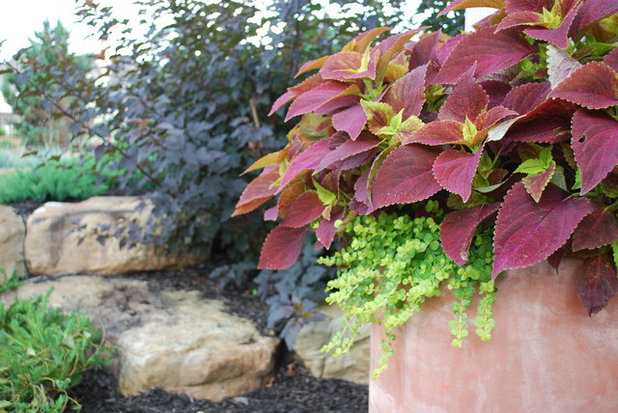
Jay Sifford Garden Design
Repeat key plants. We all have favorite plants. Mine are conifers and Japanese maples. In my garden they make recurring appearances to bring cohesion to a disparate collection of the rare and unusual. I believe that repeating 10 to 15 percent of your plant material in different areas of your garden brings cohesion that helps the brain peacefully process it as one unified space. Less than 10 percent doesn’t register, and more than 15 percent can be monotonous.
Whether your favorite plants are coleus, ninebarks or something else, look for opportunities for them to make bold and subtle appearances in different areas of your garden.
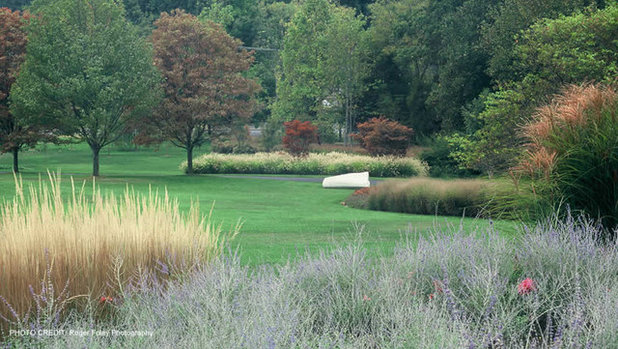
Clinton & Associates, PC Landscape Architects
Bring continuity through bed lines. Whether a garden is large or small, bed lines can make or break the aesthetic. Continuing bed lines from front yard to backyard is a great way to unify both spaces, even if they are separated by a fence. Notice how the serpentine bed lines in this large garden create a peaceful feeling and continuously pull the eye through the space, posing the question of what lies beyond.
See more ways to create a garden that flows and intrigues
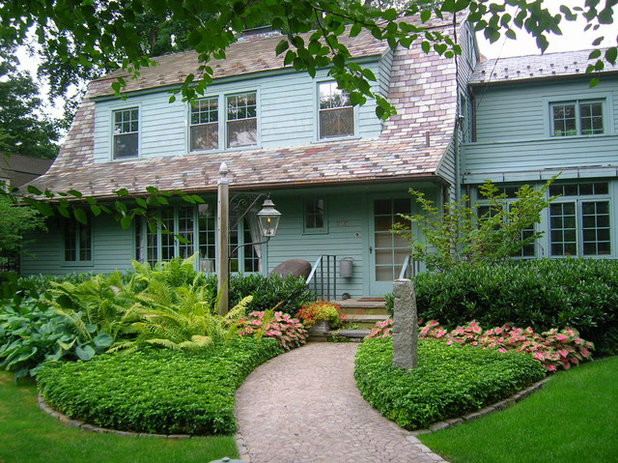
It is important to bring continuity to smaller spaces, as they can easily appear disjointed. Notice how the bed lines on both sides of this sidewalk continue a line so that the interruption is downplayed. If you are unsure about how to implement this concept, start by stretching a garden hose across your sidewalk or driveway until you discover a continuous line that pleases you.
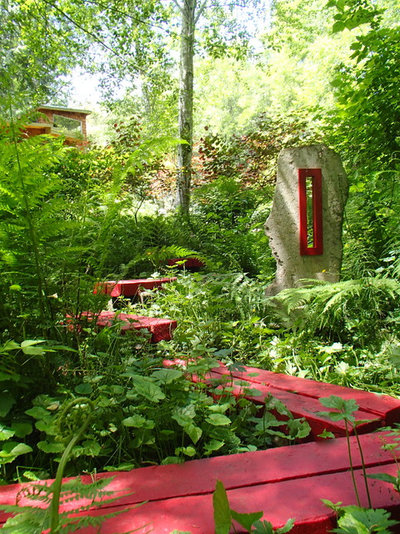
Aaron G. Edwards Landscape Architect
Repeat a common color. Instinctively, the human eye is first drawn to color. Use this instinct to your advantage by creating a thread of one color throughout your space. This composition of a red boardwalk and an art piece is a perfect example of how color can be used to best advantage. It gives the visitor a sense of comfort so that he or she is free to explore the myriad plant textures and shapes in this otherwise monochromatic woodland garden.
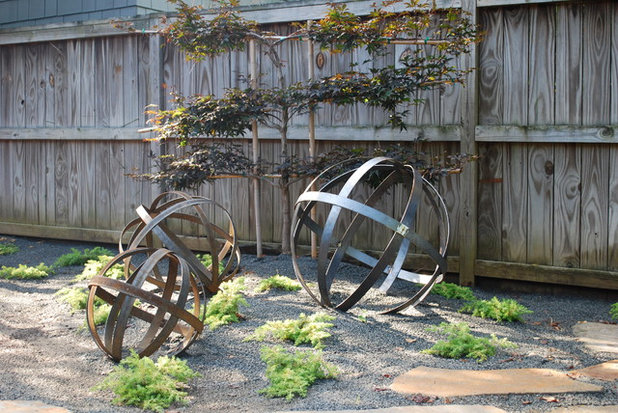
Jay Sifford Garden Design
Repeat shapes. The repetition of sculptural shapes unifies spaces with subtlety. The triptych of rusted metal spheres in this backyard garden speaks to its contemporary farmhouse theme. A triptych of granite spheres makes a statement in the contemporary front garden. While the style and materials differ, the shapes repeated in different areas of the garden reinforce the overall sense of place.
The same effect could be accomplished with shrub topiaries in a formal garden or weeping trees in an informal one.
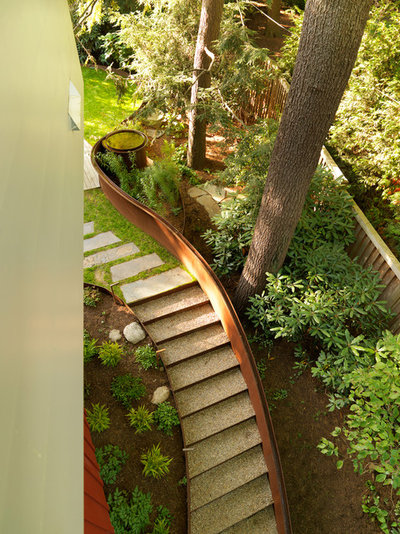
Julie Moir Messervy Design Studio (JMMDS)
Create unity with hardscaping. This garden, designed by Julie Moir Messervy, is a case study in unity and creativity. The steel rill that carries water throughout the space is the star of the garden. The rill is even incorporated into the handrail along these stairs, bringing continuity from a higher level to a lower one.
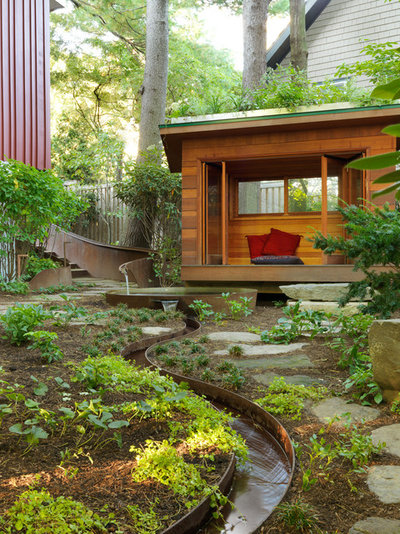
Julie Moir Messervy Design Studio (JMMDS)
The rill then carries water throughout the remainder of the space. A cohesive sense of place is established and celebrated.
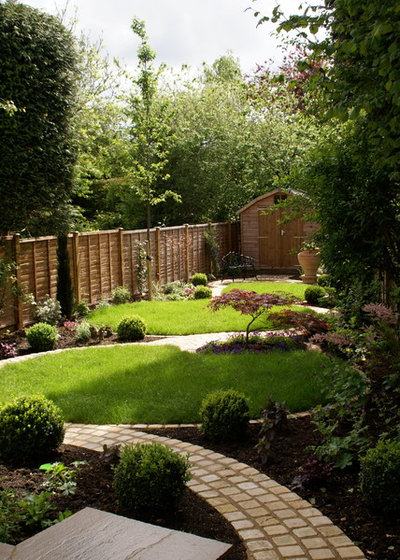
Green Tree Garden Design Ltd
Meandering garden paths are opportunities to bring a thread of continuity to a space. The choice of a single paving material, or substrate, brings cohesion to this stroll garden. In addition, the same pavers are employed to edge the beds. Garden spaces are often inadvertently chopped into disjointed sections by the use of three or four different materials.
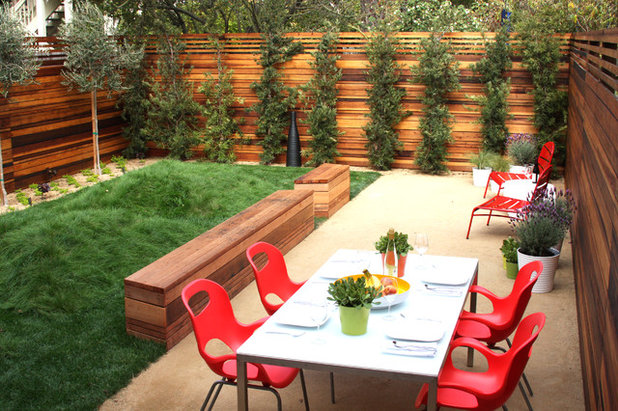
Creo Landscape Architecture + Urban Design
Build unified fences. All too frequently, suburban backyards are bordered by several different styles of fencing from adjoining neighbors. If your backyard has several different types of fencing, consider ways to bring unity to it. With the permission of your neighbors, consider painting or staining your side a common color. Or consider facing your side with a common material, like boards run horizontally, as shown here.
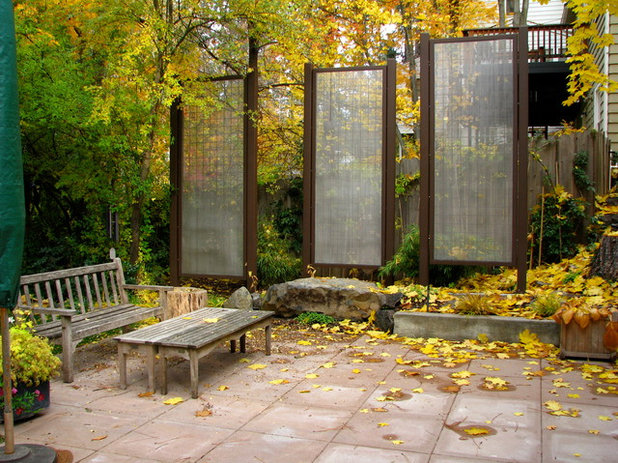
TERRABELLA, inc.
Panels or screens can be erected at intervals along the fence to create focal points, as shown here. If the material used for your screens is found elsewhere in your garden, so much the better.
A final alternative would be to create a hedge, not of one type of plant but of several, planting them in interlocking drifts to provide colorful and textural interest. The implementation of these options will pull the eye away from the negative by providing an interesting alternative.
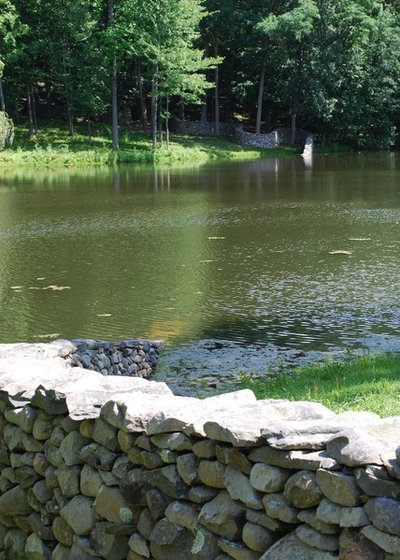
Jay Sifford Garden Design
I discovered this stone wall–art installation by Andy Goldsworthy during a visit to Storm King Art Center in New York. The wall begins at the top of a hill, continues after the interruption of a road and, like a giant serpent, winds its way into a lake and continues out the other side.
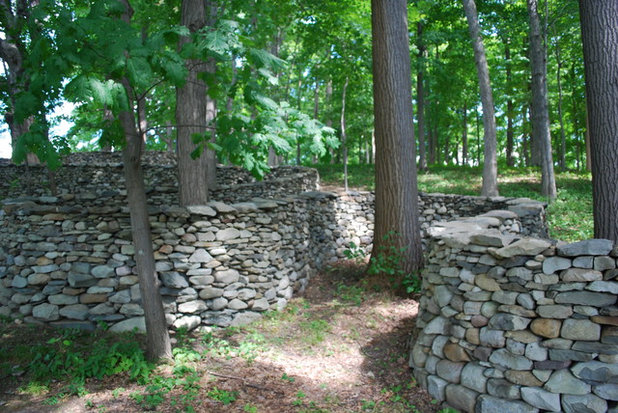
Jay Sifford Garden Design
Regaining its momentum after climbing out of the lake, the wall incorporates a series of radical curves, winding its way through a grove of trees before eventually disappearing into a hillside.
While most of us do not have the space or the means to create something of this magnitude, we can use it as an inspirational point of departure to discover our own threads that transform our spaces into personal and fulfilling gardens.
More: Create a Garden That Tells a Story





